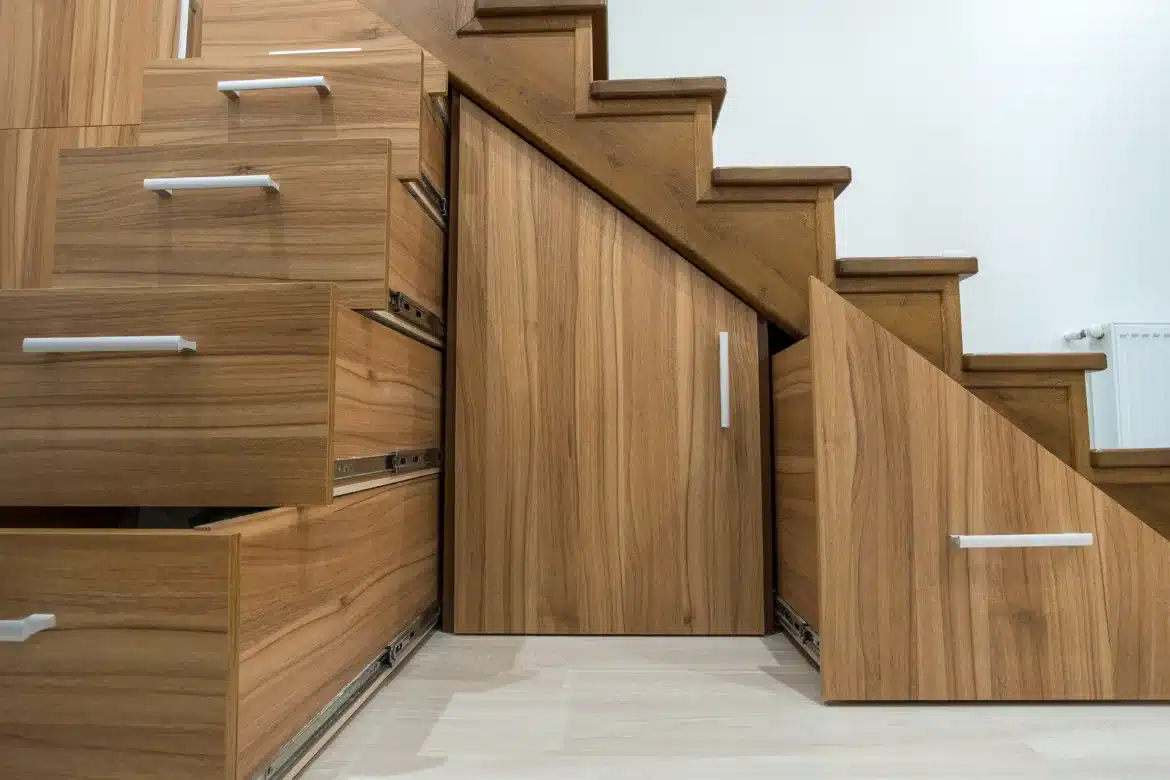Living in a compact space, whether by choice or necessity, often means a creative dance of maneuvering around corners, finding hidden storage, and ensuring every piece of furniture serves at least two functions. Welcome to the world of innovative design for small living areas!
In this extensive guide, we’ll explore a myriad of inventive solutions to optimize your living space, no matter how constrained it is. From the micro-apartments of bustling cities to the cozy cottages tucked into serene countryside’s, this comprehensive resource caters to the space-savvy dweller looking to enhance both the functionality and aesthetic of their home.
The Essence of Small Space Living
Living in a small space is a lifestyle undergoing a renaissance in this era of urbanization and sustainability. It’s not just about making do with less; it’s about simplifying, cherishing the little things, and creating environments that are both functional and beautiful. Small space living encourages mindful consumption, spurs creativity, and can lead to a higher quality of life by minimizing clutter and distractions. The challenge lies in transforming a few square meters into a multi-functional retreat.
The Popularity of Compact Living
Compact living isn’t just a trend— it’s a global movement fueled by the need for affordable housing, the rise in single-person households, and a growing interest in sustainable living practices. From the emergence of micro-lofts to the tiny house movement, compact spaces are gaining popularity and with that, the demand for smart, space-saving designs is at an all-time high.
Interior Design Principles for Small Spaces
What rules should you be following when designing for a small space? While the principles of design remain the same, the application requires strategic thinking and an understanding of scale, proportion, and functionality.
Maximizing Natural Light
One of the most potent tools in any small space designer’s toolkit is natural light. It creates an illusion of space, highlights the space’s architectural features, and has a profound effect on the mood. Use sheer, light curtains to harness as much sunlight as possible and strategically place mirrors to bounce natural light around the room.
A Cohesive Color Palette
Color is a powerful tool that can alter our perception of space. Stick to a cohesive, neutral color palette to create a sense of continuity and make the room feel more expansive. That’s not to say you should shy away from bold colors entirely, but consider using them as accents to add personality without overwhelming the space.
Multipurpose Furniture
The hallmark of small living areas is furniture that can do double or even triple duty. Think sleeper sofas, extendable dining tables, ottomans with built-in storage, and wall-mounted desks. Every piece of furniture – whether big or small – should serve more than one purpose in a small space.
The Art of Illusion
Trick the eye with clever optical illusions. This can be achieved through the use of vertical lines to draw the eye upward, the strategic placement of furniture to create pathways and give the illusion of space, and the use of large-scale art to make a room feel larger.
Storage Solutions
The perennial nemesis of small spaces is clutter, but with innovative storage solutions, every nook and cranny can be a potential repository.
Vertical Storage
When floor space is at a premium, look up! Utilize wall shelves, tall cabinets, and over-door organizers to capitalize on vertical space without encroaching on the floor area.
Hidden Compartments
Innovative joinery and furniture designs can conceal storage compartments in the most unexpected places. Consider pull-out pantry shelves, staircase drawers, and beds with hydraulic lifts that reveal vast storage areas beneath.
Modular Systems
Modular furniture and storage systems allow for versatility and adaptability. Think shelves that can be reconfigured, pegboards with moveable hooks, and stackable baskets that can grow as your storage needs change.
Furniture and Fixtures
Choosing the right furniture for a small space is crucial. It should be properly scaled, functionally efficient, and visually light to maintain the illusion of space.
Scale and Proportion
Ensure that furniture is in proportion to the size of the room. Bulky sofas and oversized coffee tables can easily overwhelm a small space, making it feel cramped. Opt for furniture with slim profiles and open bases to create the feeling of lightness.
Custom Pieces
Sometimes, custom-designed furniture is the best solution for a small space. Built-ins and tailored pieces can maximize the use of awkward corners and niches, ensuring that no space is wasted.
Closed vs. Open Storage
Balance the need for storage with the need to keep your space looking open and airy. Closed storage can hide away items to minimize visual clutter, while open storage can create a sense of depth and display personal items without adding bulk.
Technology Integration
In the modern age, technology is intertwined with our living spaces. Small space design should seamlessly integrate technology to maintain a clean and functional aesthetic.
Concealed Wires
The web of wires from our gadgets can quickly become an eyesore. Establish a plan for cable management that keeps wires out of sight, whether it’s through wall channels, wire covers, or creative placement of furniture.
Space-Saving Appliances
Technology has given rise to a host of space-saving appliances that are perfect for small living areas. From slimline dishwashers to washer-dryer combos and even combination oven-microwaves, there’s a solution for every compact space dilemma.
Smart Home Systems
Smart home technology can further enhance the functionality of your small space. Automated lighting, temperature control, and entertainment systems can all be integrated into the design to make your space more efficient and enjoyable to live in.
Lighting Strategies
Lighting is a foundational element of interior design and is especially crucial in small spaces where it can dramatically affect the perception of space.
Layered Lighting
Incorporate a variety of light sources to create a layered lighting effect. Ambient lighting provides overall illumination, task lighting concentrates on work areas, and accent lighting highlights features and adds depth to the room.
Space-Saving Fixtures
Choose fixtures that don’t take up too much visual space. Pendant lights or sconces can provide ample light without overwhelming the room, and track lighting can be adjusted to direct light where it’s needed most.
Natural Light Optimization
Maximize the use of any available natural light, ensuring that it filters through the space as much as possible. This not only saves on energy but also helps to create the illusion of a larger area.
Designing for Multi-Functionality
In a small space, every square inch counts. Therefore, each design element should serve multiple purposes to make the area as versatile and functional as possible.
Dual-Purpose Rooms
Rooms that can transition seamlessly from one function to another are the key to small space living. A home office might also function as a guest room, a dining area can double as a work space, and a living room can easily become a bedroom with the right convertible furniture.
Sliding Doors and Partitions
Flexible room dividers like sliding doors or curtains can open or close off spaces as needed, providing privacy without the need for solid walls. This is an excellent way to create the feeling of distinct rooms in an open floor plan.
Adaptable Layouts
Design your space with an eye for adaptability. Consider pieces that can be easily moved or reconfigured to accommodate different uses, and don’t be afraid to experiment with new layout arrangements to find what works best for you.
Sustainability in Small Spaces
Sustainability and small space living are natural allies. When you have less space, you’re naturally inclined to consume less and be more conscious of your environmental footprint.
Upcycling and Repurposing
Get creative with upcycling and repurposing items to serve new functions. Turn old suitcases into bedside tables, use fruit crates as bookshelves, or transform a ladder into a clothes rack.
Energy-Efficient Design
Incorporate energy-efficient design elements like LED lighting, passive heating and cooling strategies, and high-quality insulation to reduce your environmental impact and energy bills.
Green Technology
Explore green technologies such as living walls, hydroponic gardens, and water-saving fixtures that not only optimize space but also bring elements of the outside in, improving air quality and contributing to your overall well-being.
Styling and Aesthetics
Small spaces can be just as stylish and thoughtfully designed as their larger counterparts. The key is to be intentional with your choices and to edit and curate your belongings.
Keep It Cohesive
Create a cohesive design by sticking to a particular style or theme. This doesn’t mean every item has to match perfectly, but a cohesive aesthetic will create a sense of unity and order in the space.
Personalization
Don’t be afraid to inject your personality into your small space. Use artwork, textiles, and decor to tell your story and make the space feel uniquely yours.
The Power of Plants
Plants are a fantastic way to bring life and energy into a small space. They can act as natural room dividers, provide visual interest, and even improve air quality. Look for low-maintenance varieties if you’re not a green thumb.
The Final Word on Small Space Design
Innovative design for small living areas is a multifaceted endeavor that blends art, science, and ingenuity. By understanding the core principles of design, addressing storage needs, integrating technology, and prioritizing sustainability, you can create a comfortable and visually appealing home no matter the size of your space.
Small space living encourages us to rethink our approach to design and reevaluate what we truly need to live comfortably. It’s an opportunity to declutter not just our living spaces but also our lives, and in doing so, to unlock a wealth of potential for innovative and beautiful design. Remember, in the world of small spaces, less can truly be more.



